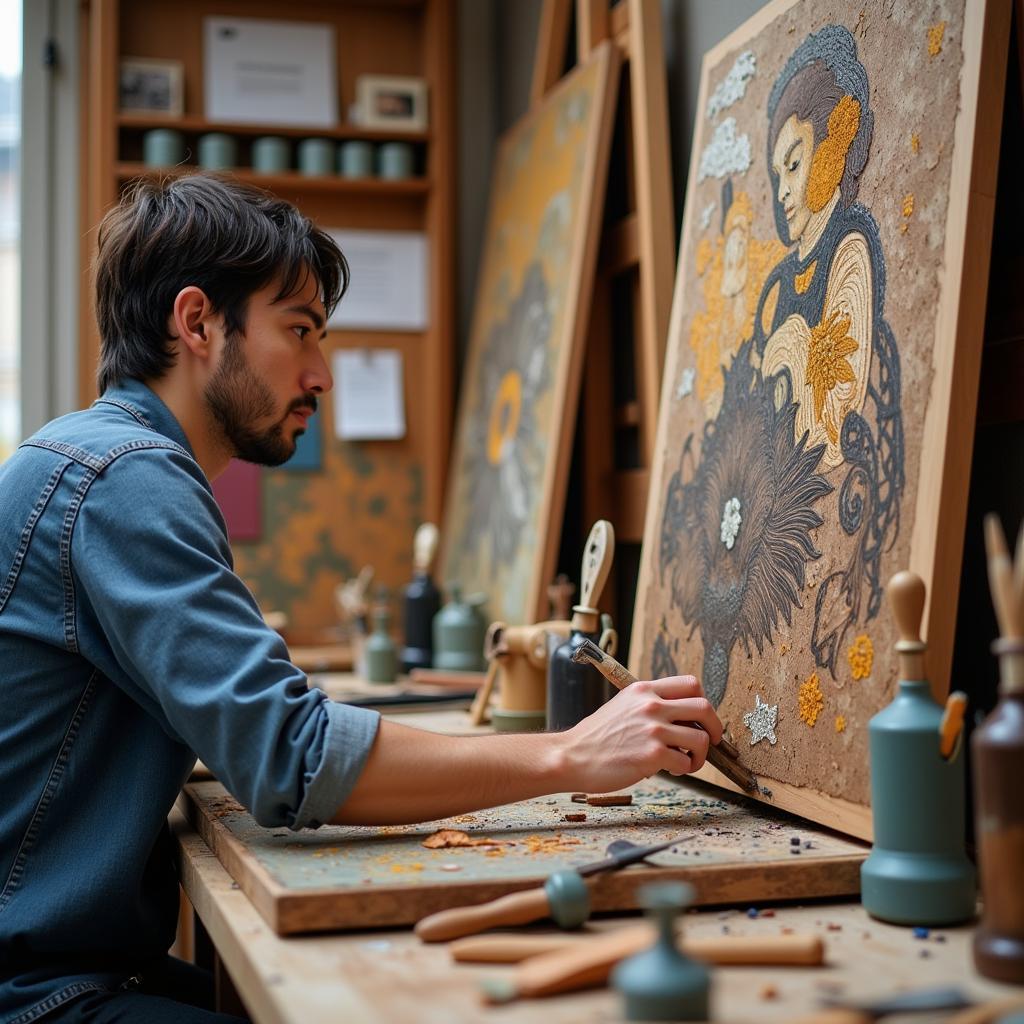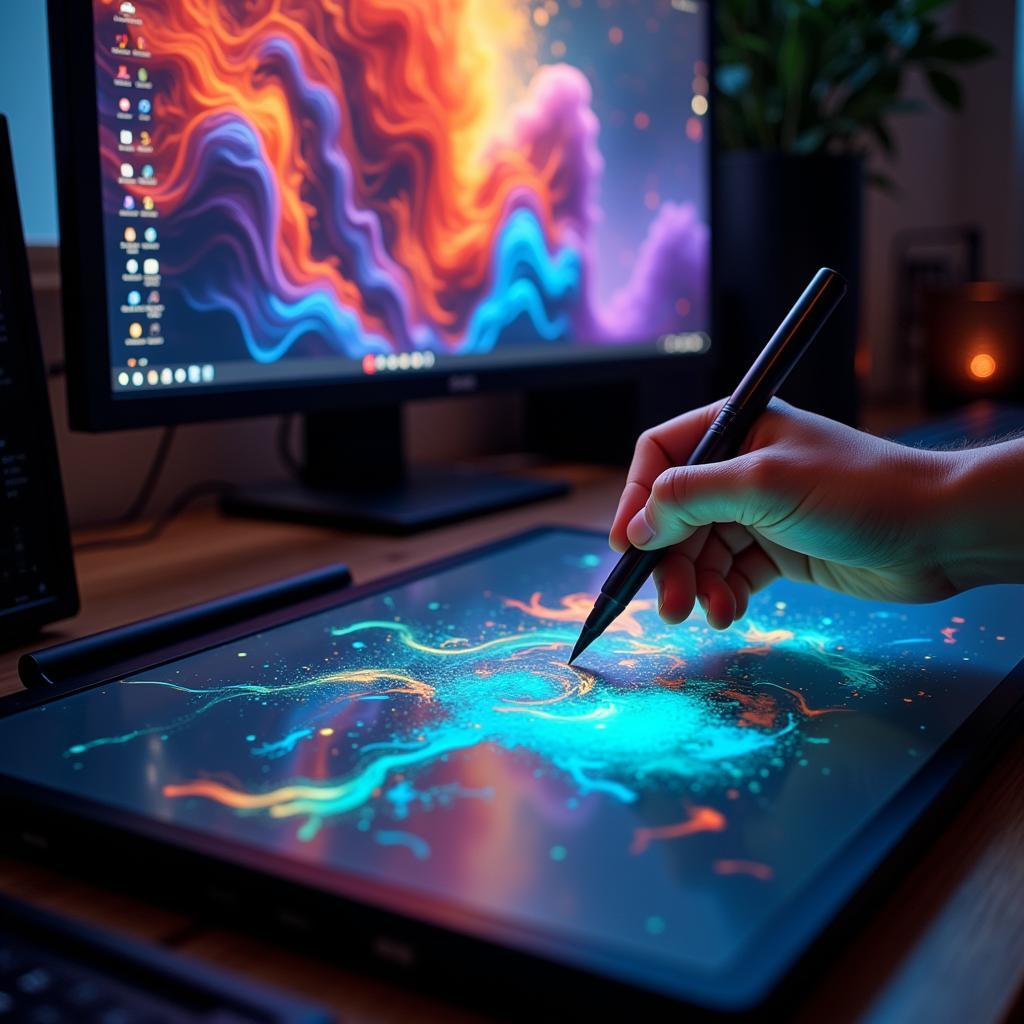Mastering the Art Project Rubric: A Digital Artist’s Guide to Success
Navigating the world of digital art can feel like stepping into a boundless, exhilarating, and sometimes overwhelming landscape. It’s a space where creativity knows no bounds, and with the right tools and guidance, you can transform your artistic visions into stunning digital masterpieces. One crucial tool that can significantly elevate your creative journey, especially within an academic or structured learning environment, is the Art Project Rubric.
This comprehensive guide will delve into the significance of art project rubrics, offering insightful tips and strategies to help you not only interpret their requirements but also leverage them to enhance the quality and impact of your digital artwork. Whether you’re a budding digital artist or a seasoned creative seeking to refine your skills, understanding and effectively utilizing the art project rubric can be a game-changer.
Deciphering the Code: Understanding the Anatomy of an Art Project Rubric
Before embarking on your digital art odyssey, it’s essential to first familiarize yourself with the roadmap that will guide you to your destination: the art project rubric. Think of it as a treasure map, outlining the specific criteria and benchmarks that will determine the success of your artistic endeavor.
Typically, an art project rubric is structured as a grid, with rows representing different assessment categories and columns outlining varying levels of achievement within each category. Let’s break down these components:
1. Assessment Categories: The Building Blocks of Your Artwork
These categories represent the core aspects of your artwork that will be evaluated. While specific categories may vary depending on the project and instructor, some common elements include:
- Concept and Creativity: This category assesses the originality of your idea, the thought process behind it, and how effectively you’ve conveyed your artistic vision.
- Technical Skill: Here, the focus is on your proficiency in utilizing various digital art tools and techniques to execute your concept.
- Composition and Design: This category evaluates the arrangement of elements within your artwork, considering aspects like balance, unity, and visual flow.
- Craftsmanship and Presentation: This pertains to the overall finish and polish of your work, including attention to detail, neatness, and the effectiveness of your presentation format.
2. Levels of Achievement: Climbing the Ladder of Excellence
Within each assessment category, you’ll find different levels of achievement, often presented as a graduated scale. These levels define the spectrum of quality, ranging from basic competency to exceptional mastery. Some common level descriptors might include:
- Beginning/Novice: Demonstrates a basic understanding of the concept or skill, with room for significant improvement.
- Developing/Intermediate: Shows progress and developing competence, but may still exhibit some inconsistencies.
- Accomplished/Proficient: Reflects a solid grasp of the concept or skill, demonstrating consistent and skillful execution.
- Exemplary/Advanced: Signifies exceptional mastery and originality, exceeding expectations in terms of creativity and technical proficiency.
3. Descriptors: Illuminating the Path to Success
Each level of achievement within a rubric is accompanied by specific descriptors that outline the concrete expectations for that level. These descriptors provide clear, measurable benchmarks, leaving no room for ambiguity. For example, a descriptor for “Proficient” under “Technical Skill” might state: “Demonstrates a high level of proficiency in using digital art software, including layering, blending, and brush control, to create desired effects.”
Why Art Project Rubrics Are Your Secret Weapon
You might be wondering, “Why should I care about these rubrics?” Here’s why they are not just guidelines, but powerful tools for digital artists:
- Clarity and Transparency: Rubrics eliminate any guesswork by clearly outlining the assessment criteria and expectations, ensuring you’re on the same page as your instructor.
- Targeted Feedback: Rubrics provide specific and constructive feedback on your strengths and areas for improvement, allowing you to focus your efforts effectively.
- Self-Assessment and Reflection: By using the rubric as a self-evaluation tool, you can objectively assess your work, identify your strengths and weaknesses, and track your progress over time.
- Skill Development: Rubrics encourage you to focus on developing specific skills and techniques, pushing you to refine your craft and reach higher levels of artistic proficiency.
Maximizing Your Artistic Potential: Tips for Using Art Project Rubrics Effectively
Now that you understand the structure and benefits of art project rubrics let’s explore some practical strategies to leverage them for maximizing your creative output:
1. Deconstruct the Rubric:
Before you even open your digital art software, take the time to thoroughly analyze the rubric. Break it down into its individual components – the assessment categories, levels of achievement, and descriptors. Understand what’s being asked of you in each area.
2. Plan Your Attack:
Once you’ve deconstructed the rubric, develop a strategic plan for your art project. Outline how you intend to address each assessment category and the specific techniques or approaches you’ll employ to achieve the desired level of excellence.
3. Embrace the Feedback Loop:
View the rubric as an ongoing guide throughout your creative process. Don’t be afraid to use it to self-evaluate your work in progress. Identify areas where you might be falling short of the desired level and make necessary adjustments along the way.
4. Seek Clarification:
If any aspect of the rubric seems unclear or you’re unsure about the expectations, don’t hesitate to reach out to your instructor for clarification. It’s always better to address any confusion early on than to proceed with assumptions that might lead you astray.
From Rubric to Reality: Bringing Your Digital Art to Life
Let’s illustrate how to apply these principles using a hypothetical scenario. Imagine you’re tasked with creating a digital artwork exploring the theme of “Urban Landscapes” for your digital art class.
Scenario: The Urban Jungle
Project Brief: Create a digital artwork that captures the essence of urban landscapes, exploring the interplay between nature and man-made structures.
Art Project Rubric:
| Assessment Category | Beginning | Developing | Accomplished | Exemplary |
|---|---|---|---|---|
| Concept & Creativity | Idea is simplistic and lacks originality. | Concept shows some thought but lacks depth. | Idea is well-developed and demonstrates creativity. | Concept is highly original and thought-provoking. |
| Technical Skill | Demonstrates limited control over digital art tools. | Shows developing proficiency in using software and techniques. | Exhibits strong technical skills, using a variety of tools and techniques effectively. | Demonstrates mastery over digital art software and techniques, achieving highly sophisticated effects. |
| Composition & Design | Composition is disorganized and lacks unity. | Composition shows some organization but lacks visual flow. | Elements are well-arranged, creating a balanced and visually appealing composition. | Demonstrates exceptional compositional skills, creating a dynamic and engaging visual narrative. |
Applying the Strategies:
- Deconstruct the Rubric: You would begin by carefully analyzing each assessment category and the associated descriptors for each level of achievement.
- Plan Your Attack:
- Concept & Creativity: Instead of a literal depiction of cityscapes, you could explore a more metaphorical concept, like a lone tree growing through concrete, representing resilience and the persistence of nature.
- Technical Skill: You could experiment with various digital art techniques like photo manipulation, digital painting, or 3D modeling to create your artwork. The rubric emphasizes using a variety of tools, so explore and showcase your versatility.
- Composition & Design: You might use leading lines, rule of thirds, and other compositional principles to create a visually engaging and balanced artwork.
- Embrace the Feedback Loop: As you work on your piece, continually refer back to the rubric. For instance, if you find your initial composition lacking dynamism, revisit the “Composition & Design” category, analyze the descriptors, and experiment with different arrangements until you achieve the desired level of excellence.
By systematically using the rubric as your guide, you not only meet the project requirements but also challenge yourself to push your creative and technical boundaries, resulting in a more impactful and successful digital artwork.
Conclusion: Embracing the Art Project Rubric as Your Creative Compass
As you embark on your journey as a digital artist, remember that the art project rubric is not a restrictive cage but rather a liberating framework that empowers you to explore your artistic potential to the fullest. By embracing its guidance, you can confidently navigate the exciting world of digital art, transforming your artistic visions into captivating realities.
FAQ:
- Can I deviate from the rubric’s criteria? While some flexibility is often allowed, it’s crucial to consult your instructor before making significant departures from the rubric’s guidelines.
- What if I don’t agree with the rubric’s assessment of my work? Engage in a respectful dialogue with your instructor, providing specific examples and reasoned arguments to support your perspective. Remember, feedback is meant to be a constructive learning experience.
- How can I use the rubric to improve my skills for future projects? Analyze your past rubrics, identifying recurring areas for improvement and focusing on developing those specific skills in your future endeavors.
Need further assistance in navigating the world of digital art and mastering the art project rubric? Contact us at Phone Number: 02462573573, Email: [email protected], or visit us at Savico Megamall, 7-9 Đ. Nguyễn Văn Linh, Gia Thụy, Long Biên, Hà Nội 10000, Việt Nam. Our dedicated team is available 24/7 to support you on your creative journey.



